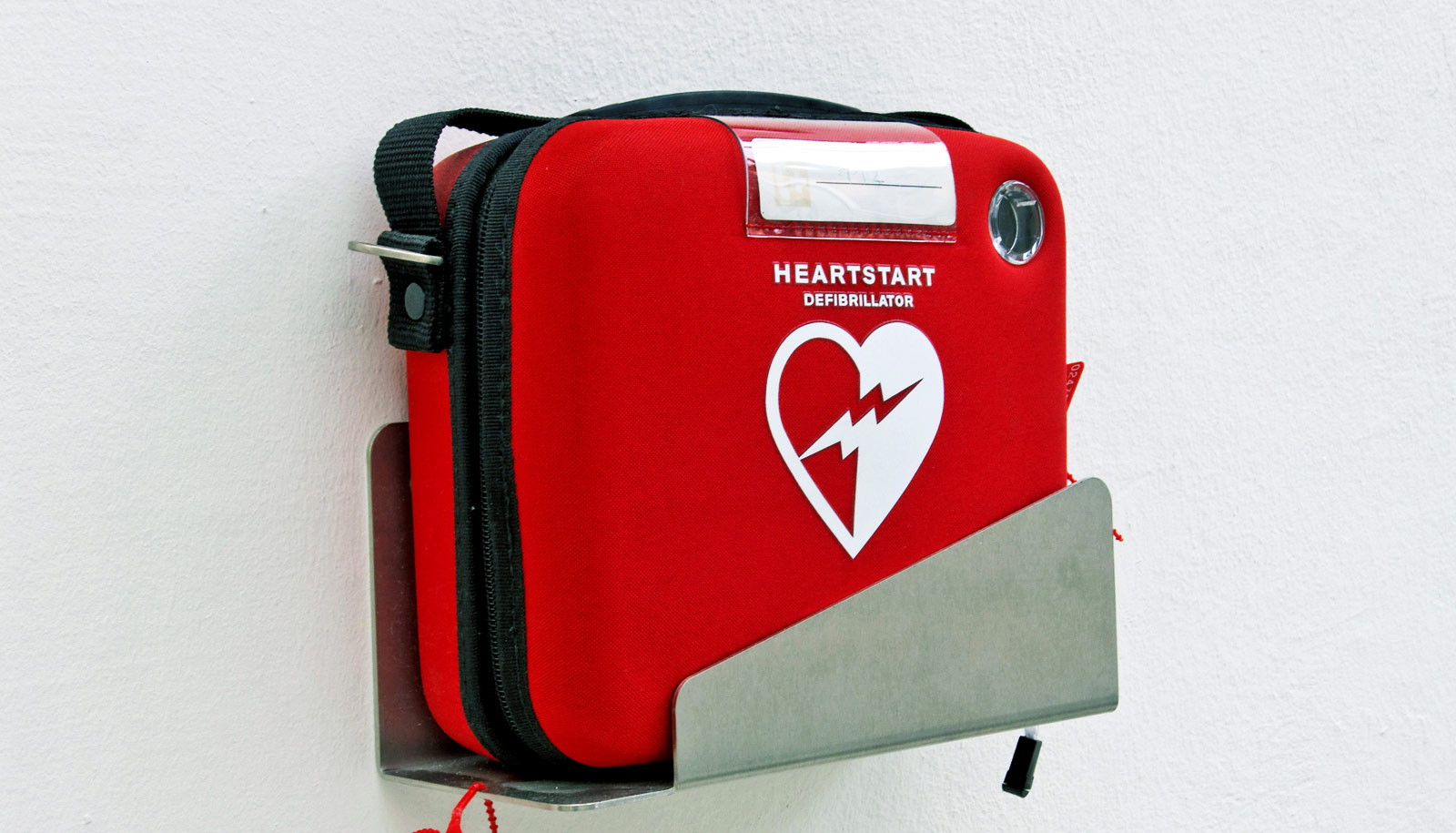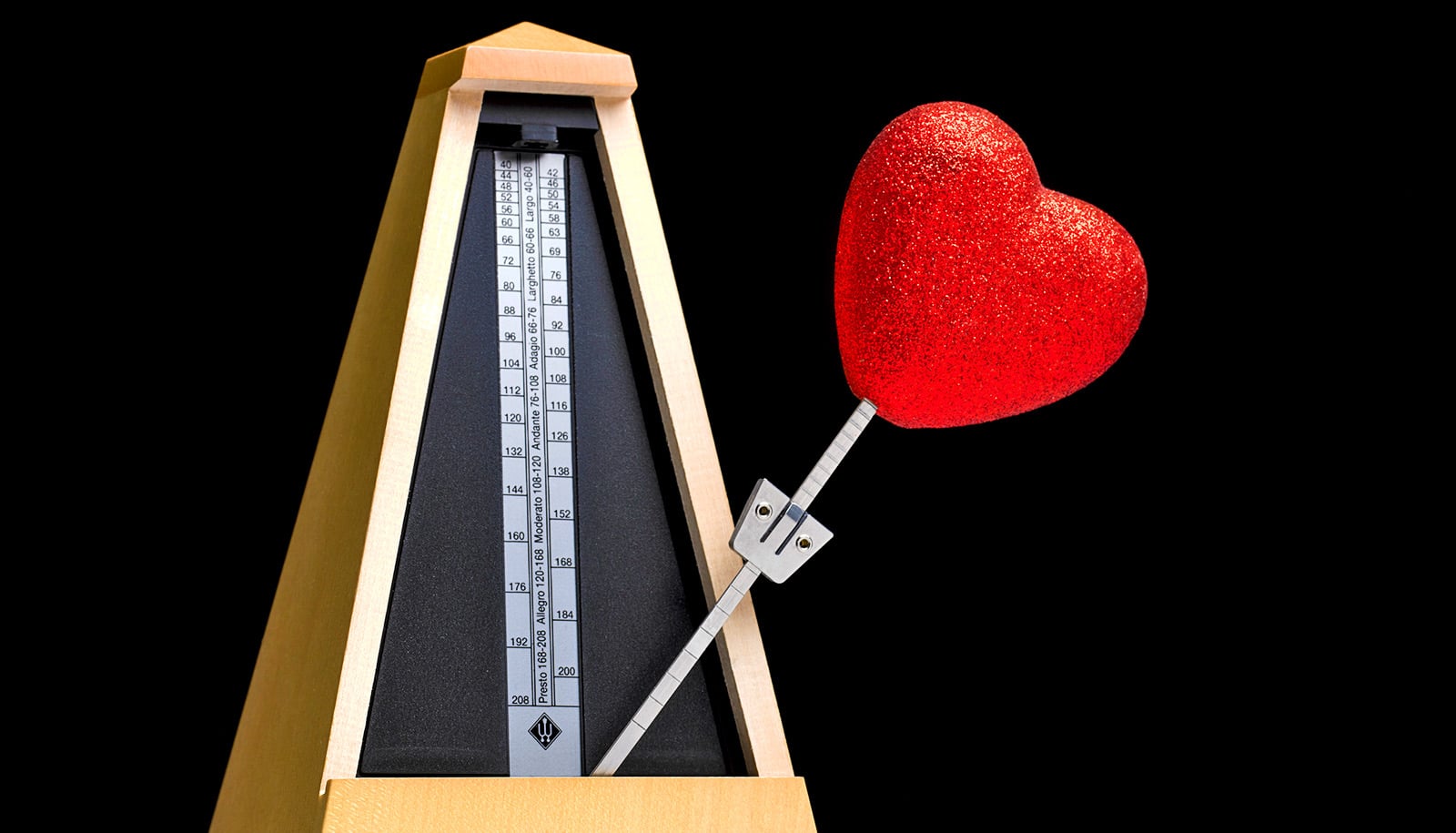People are reluctant to use public access defibrillators to treat cardiac arrests, research suggests.
Published in the European Heart Journal, the new analysis of existing international studies indicates that a number of factors prevent members of the public from using them and potentially saving lives.
“Public access defibrillation is very effective in certain cases of cardiac arrest outside of hospital.”
The work finds that many members of the public don’t know what an automated external defibrillator (AED) is, where to find one, or how to use one—even though the devices are suitable for use by untrained members of the public.
The researchers found variation across the studies in the number of people willing to use an AED, but lack of confidence and fear of harm were common themes.
“Public access defibrillation is very effective in certain cases of cardiac arrest outside of hospital,” says Gavin Perkins, professor in critical care medicine at Warwick Medical School, University of Warwick.
“A study conducted in the US showed that the chance of survival was nearly double in the group that received CPR and were treated with a public access defibrillator compared to the group that received CPR alone. However the number of cases when a public access defibrillator is used is very low—just 0.15-4.3 percent of cardiac arrests that occur outside of hospitals.”
Although only a minority of out of hospital cardiac arrests occur in locations where use of a defibrillator would help save a life AEDs are often poorly accessible or have limited availability. Often, emergency services or people running training programs don’t even know where they are. They also found that although members of the public saw the value of AED training most hadn’t done it.
“Investment in more AEDs is great but it’s at least as important to maximize use of existing defibrillators,” says Theo Arvanitis, professor of e-health innovation and head of research at the Institute of Digital Healthcare, WMG, at the University of Warwick.
“Many cardiac arrests that happen in public occur out of ‘normal business hours’ therefore if an AED is kept in a building there is a good chance the building won’t be accessible.
“We would also like to see the message put out that these devices can be used without training. However our study found that those with training were more likely to use an AED so training is important too.”
The researchers found that public-access AEDs were often the result of donation or fundraising rather than private purchase, and donation predicted AED acquisition among college athletic departments in one study.
Is the Good Samaritan gone—and racist?
The research team also examined the reasons for not obtaining an AED. They were: cost; concerns about liability; not being thought considered necessary; lack of and/or attrition of responsible individuals; there was a good, local emergency service; and there was a nearby hospital. One study reported that while 32 percent cited cost and 37 percent cited legal concerns as reasons not to obtain an AED, 55 percent thought affordability and 51 percent thought legal protection were good reasons to obtain an AED.
They also highlighted that maintenance of AEDs was variable. One study reported that all but one of 206 AEDs were “operable” and ready for use, but many AEDs were not maintained or had no formal plans in place for maintenance or replacement.
The systematic review consisted of an analysis of 68 English-language articles. Many of them were observational, many collected data retrospectively, or were surveys. Due to the nature of the articles surveyed the team recommend further research before making policy proposals.
Source: University of Warwick



